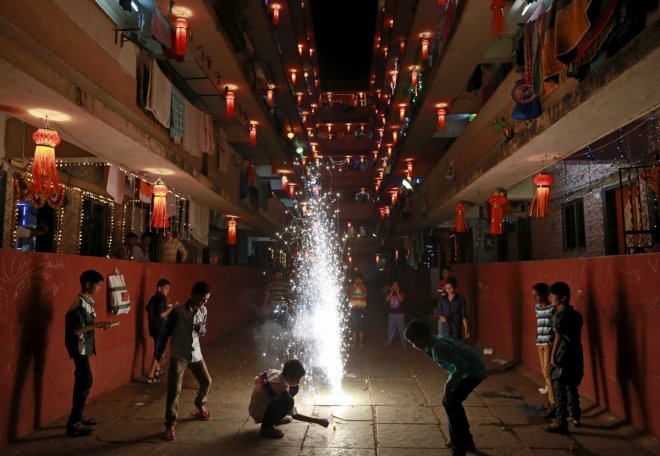
Indians across the globe are all set to celebrate Deepavali with utmost glory this week. Deepavali is a Sanskrit word which has been derived from 'Deepa' meaning light and 'avali' means in a line or series. Hence, it is also known as the festival of lights. This is one of the biggest celebrations in the Hindu calendar and is universally celebrated by Hindus.
When is Deepavali celebrated?
Deepavali is celebrated over several days, with each day signifying a certain aspect of the many layered mythological meanings behind the festival. As per calculations in the Hindu lunar calendar, the main festival falls on Wednesday October 18 this year.
Is it the precursor of Halloween traditions?
Deepavali spiritually signifies the ultimate victory of light over darkness, good over evil, knowledge over ignorance, and hope over despair and symbolizes prosperity and wealth. In some modern reading of the ontological base of the festival, parallels have even been drawn between the western festival of Halloween, which is basically premised on the artful ways of getting the better of the lurking evil-- albeit in an unserious manner.
Stories revolving round the origin of Deepavali
Deepavali is all about celebrating life and the goodness. It signifies light over darkness, life over death, new over old, health over pestilence, abundance over paucity and so on and so forth. Although the universal themes of the festival are quite the same, the customs, traditions and the characters differ.
The most popular tale of the origin of Deepavali is the story of Lord Rama's epochal battle with 10-headed demon king Raavana over the majestic Sita Devi. After the Lord vanquished the netherworld demon, his folks gave him a rousing welcome in Ayodhya, lighting a thousand lamps, or diyas, in little clay urns and lining them up in rows.
Meanwhile, there is another story that talks about how Lord Vishnu took the avatar or incarnation of Vaamana the Dwarf to spare the gods from the unceasing trouble from King Bali. However, this myth itself has spawned numerous conflicting interpretations. The main story strand celebrates the victory over Bali, who was sent to the Hades by the Vaamana avatar of Lord Vishnu, much to the relief and amusement of the gods.

Jain and Sikh traditions
Meanwhile in India, the Jains and the Sikhs have different reasons to celebrate the festival of lights. For the Jains the Deepavali celebrations also signify the Nirvana, or the attainment of the high heaven, by Lord Mahavira.
While in the Sikh traditions, Deepavali is an occasion also for the celebration of sixth Guru Hargobind's return from captivity. In Bengali tradition, Deepavali is an occasion for paying obeisance to Godddes Kali, or the Mother Kali, who symbolizes strength, protection and the annihilation of the evil.
Deepavali customs
People clean their houses, place diyas or candles on housetops, outside doors and windows, and around temples. They wear new clothes and worship Goddess Laxmi for wealth and prosperity. In some places, Goddess Kali is worshipped on this festival. People burst crackers and distribute sweets to celebrate the festival of light.
On this occasion, Indians indulge themselves into rich platter of foods that are not just meant as an annual gastronomic extravaganza abut also as a symbol of the providence of the deities. They burst crackers and fireworks with the belief of scaring away the evil spirits.
Deepavali is also an occasion for sending messages, greetings and wishes to family and friends and for choosing the choicest gifts for them. According to some surveys, Deepavali is the great shopping season in India, Malaysia and Singapore. Nearly 40 percent of the annual sales of consumer goods, fashion accessories etc take place. Sales of gold accessories and cars also spike during the time.
Deepavali in Southeast Asia
In Southeast Asian countries, Deepavali is an occasion for everyone to celebrate with their Hindu friends, who open their doors for people of other communities. Apart from Malaysia and Singapore, the other places in the region where Deepavali is celebrated whole-heartedly in Myanmar and Mauritius, and Indonesia to an extent. The festival is also celebrated in places like Guyana, Trinidad and Tobago, Suriname and Fiji which are imbued with traces of Indian culture and belief systems from the mass migrations several centuries ago.
Singapore's Little India
In Singapore, Little India is the nerve centre of all the deepavali celebrations. The streets are decorated with celebratory colours. From floral aromas, cusine attractions and the bustling trade in gold jeweller and gems to a hard sell of Indian health products are all part of the deepavali celebrations in Singapore.









